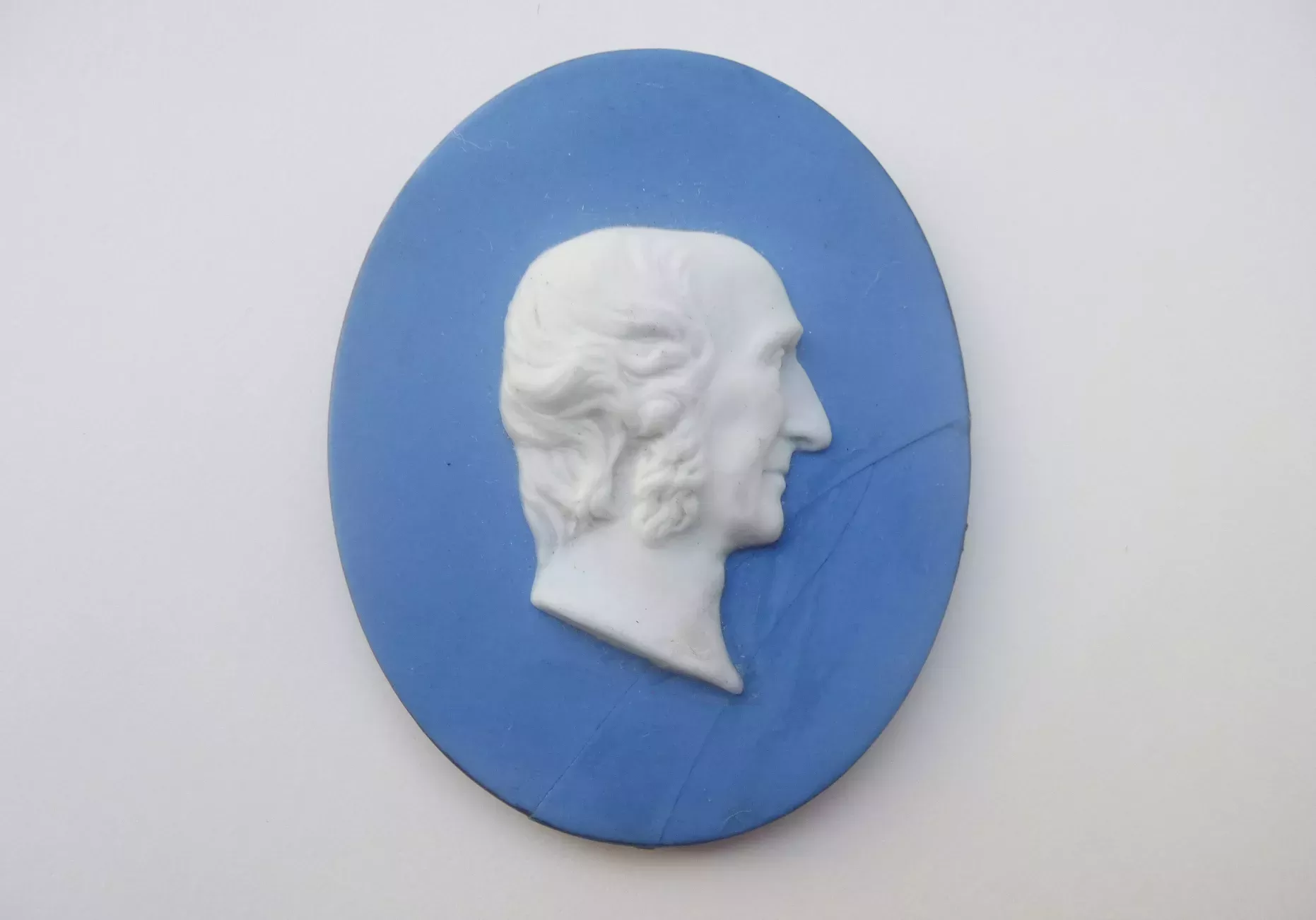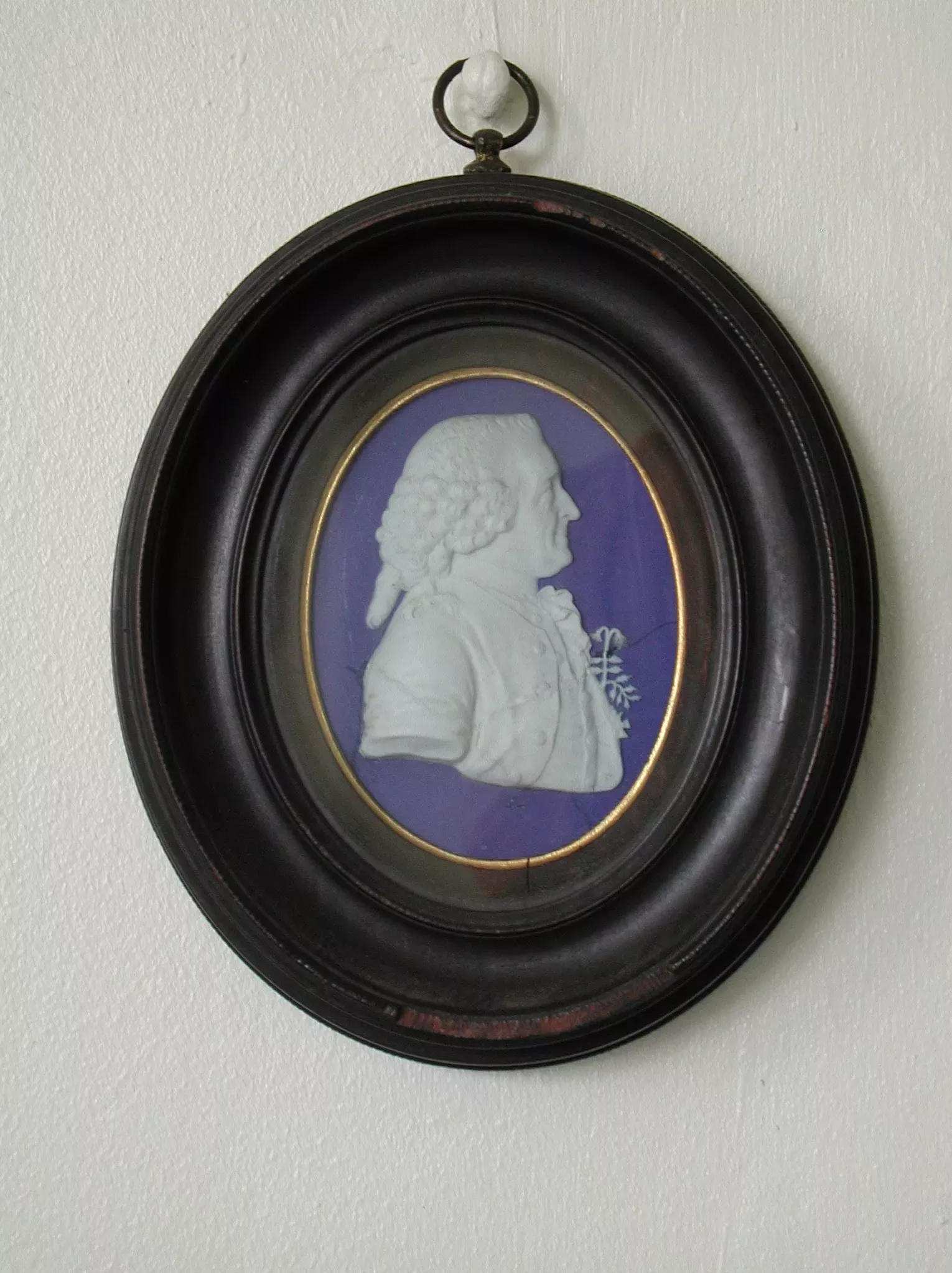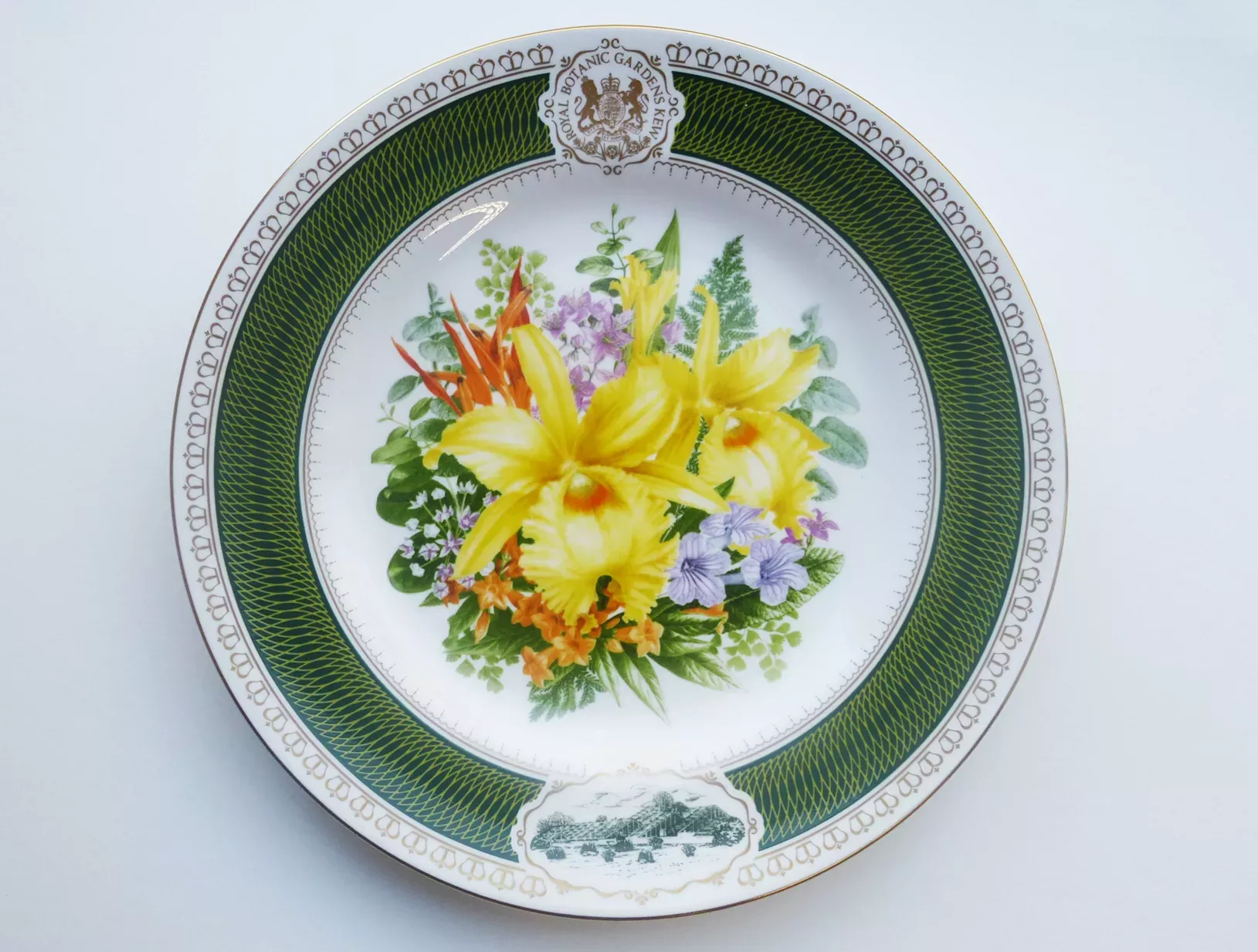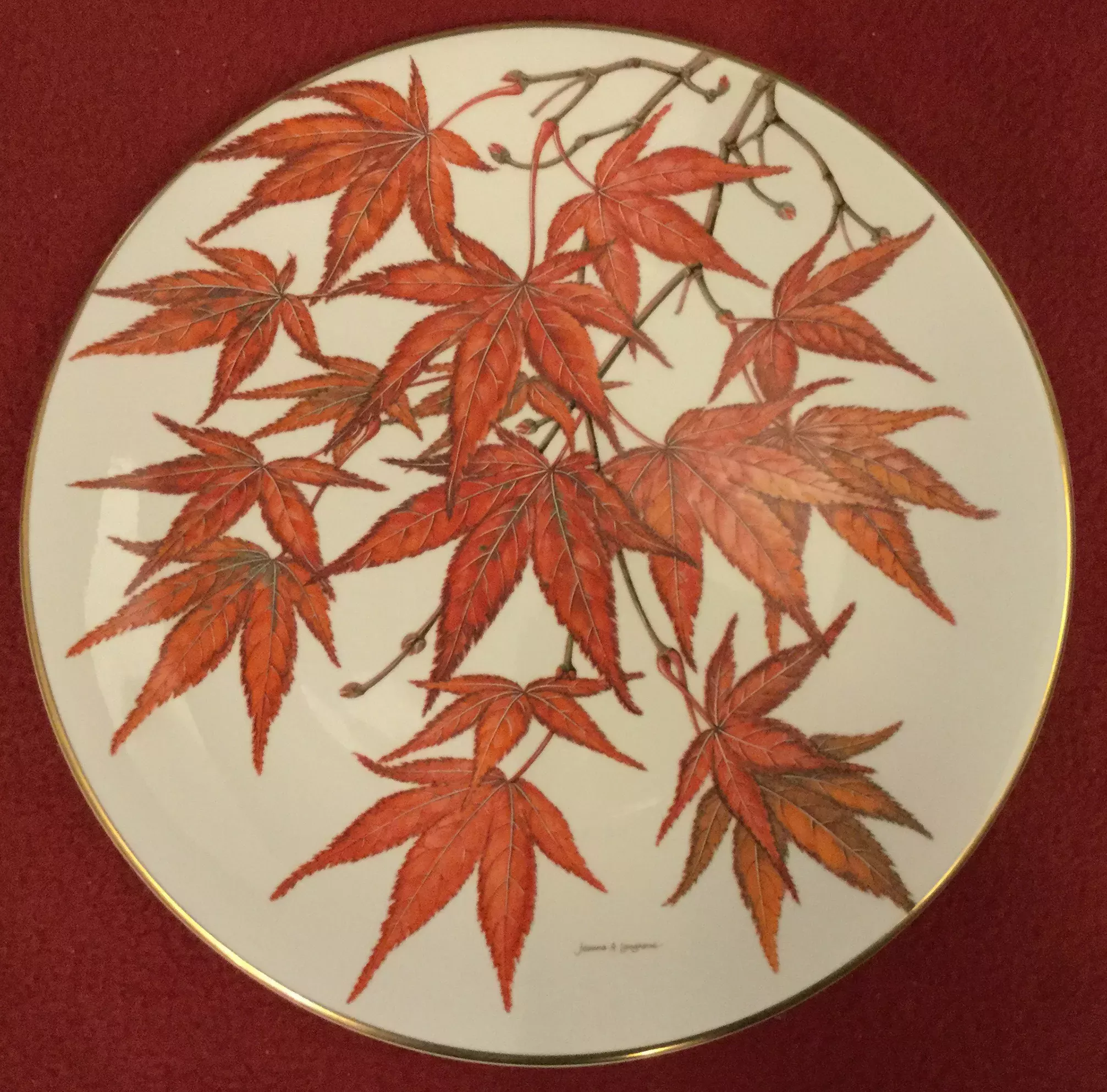20 December 2019
Kew does it with ceramics
Discover some of the vibrant commemorative items held in our Art and Artefacts collection

Commemorative ceramics
Kew has a long tradition (260 years’ worth) of marking milestones with a remarkable and beautiful collection of specially-commissioned ceramics….florally inspired, of course.
Our Art and Artefacts collection now holds countless medallions, plates, sculptures amongst other unique pieces.

Kew's first director
The oldest item is a medallion bearing the bust of Kew’s first director, Sir William Hooker (1785-1865), which was created around 1866 to commemorate his life.
It is crafted from pale blue jasperware (a type of unglazed stoneware) with white relief decoration, producing a cameo effect.
The medallion was made by the famous firm of Josiah Wedgwood and Sons – chosen for their quality and perhaps, not so coincidentally, their shared year of establishment, 1759.
Although the Kew piece is slightly damaged, similar examples are held by the British Museum, UK, and Birmingham Museum of Art, USA.
Alongside the image of Kew’s first director in Kew’s collection, is a striking blue Wedgwood jasperware medallion of Carl Linnaeus (1707-1778), founder of the modern system of naming all species of life on Earth.
It was produced in 1775 and shows Linnaeus in profile with full wig and a spray of the ‘twinflower’ shrub, scientifically named in Latin in his honour as Linnaea borealis.

Flora Exotica and Flora Pacifica
Two special colourful collectors’ plates were commissioned within four years of each other in 1987 and 1990.
The first, entitled Kew Flora Exotica and bearing designs by artist Pandora Sellars, celebrates the opening of the Princess of Wales Conservatory; a building which replaced a staggering 26 small glasshouses!
The plate is adorned with seven plant species grown within the new glasshouse.
Central among these is the yellow orchid Sobralia xantholeuca, native to South America (from Peru to Mexico), which first flowered at Kew in 1893. One of these plates was presented to His Royal Highness The Prince of Wales.


The second, entitled Kew Flora Pacifica and with illustrations by Coral Guest, marked the 150th anniversary of the opening of Kew Gardens to the public and the official opening of the Joseph Banks Building in 1990.
It is illustrated with 10 different flowers, representing areas of the Pacific – from the state flower of Hawaii (Hibiscus) to the fuchsia heath of Australia (Epacris longiflora, among the plants collected by Joseph Banks in Botany Bay, Australia in 1770)
The New Zealand flax (Phormium tenax, used as a fibre source by the Maori) is also included.
Both of these highly decorative plates were produced in fine bone china for Kew by the historic firm of Royal Worcester Spode Limited, edged in 22 carat gold.
Impressive Eagle Vase
On 6 November 1990, Her Majesty The Queen Mother visited Kew to re-open the Palm House after its refurbishment.
It was also the year of The Queen Mother’s 90th birthday, and so Kew presented her with a magnificent ‘Eagle Vase’, produced from Coalport porcelain, again by Wedgwood.
The large (32 cm tall) vase bears an intricately detailed hand-painted vignette of Kew’s Palm House around the body, with sumptuous gilding above and below and a majestic eagle atop the lid.
A total of ten were commissioned: one was presented to Her Majesty and one is housed at Kew, so there are eight more out there.

Four years later and coinciding with a new book, ‘Marianne North at Kew Gardens’, a set of Coalport porcelain framed plaques depicting paintings from Kew’s Marianne North (1830-1890) Gallery were produced in a limited edition of 9,500 sets.
Kew 250
Kew’s quarter of a millennium anniversary in 2009 was a momentous occasion in our history.
To celebrate this event, a set of 12 colourful plates – one for each month of the year – were produced by the Danbury Mint and illustrated by Joanna Langhorne.
Each plate bears one selected plant species which has significance in Kew’s history, including the Great Chinese Rhododendron (Rhododendron sinogrande) for May (the first seed of which was brought to Britain in 1912 by prolific plant collector George Forrest).
An African blue lily (Agapanthus inapertus) was chosen for September, (a species collected by Francis Masson, the first Kew plant collector appointed by Joseph Banks).
A Camellia (Camellia reticulata) and Japanese Maple (Acer palmatum) were also included in the series. Both species were introduced to Britain around 1820.
These fascinating details are recorded on the reverse of the plates, which were produced for sale to allow our supporters to collect souvenirs of our special anniversary.


Kew really has celebrated with ceramics and these are just a small selection of the many hundreds of items held in Kew’s diverse Art and Artefacts collection.



